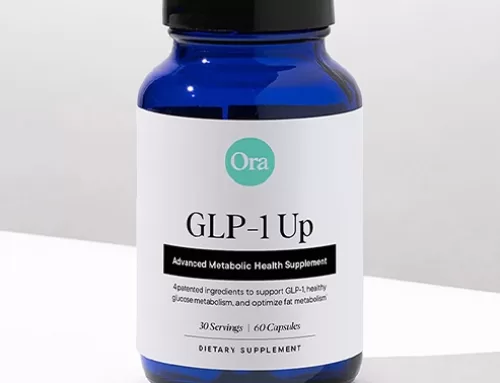Natural Alternatives to Ozempic: A Comprehensive Guide for Metabolic Health and Weight Management
In recent years, Ozempic (semaglutide) has gained immense popularity as a treatment for type 2 diabetes and, more recently, for weight loss. While its effectiveness is well-documented, many are searching for natural alternatives that can provide similar metabolic benefits without the potential risks associated with synthetic drugs. This blog will explore the benefits and severe side effects of Ozempic, the rise of natural alternatives, and why they might be a safer, more sustainable option for long-term weight management.
Understanding Ozempic: What It Is and How It Works
Ozempic is a GLP-1 (glucagon-like peptide-1) receptor agonist that mimics the effects of the GLP-1 hormone in the body. This hormone is naturally produced in the gut and helps regulate blood sugar levels by increasing insulin secretion, slowing gastric emptying, and signaling the brain to reduce appetite. Initially prescribed for type 2 diabetes management, Ozempic has become a weight loss solution for many, as it promotes a sense of fullness and helps people adhere to a calorie-restricted diet.
Benefits of Ozempic
- Effective Weight Loss: Clinical studies have shown that Ozempic users can lose an average of 14.9% of their body weight over 68 weeks, making it one of the most effective medications available for weight loss.
- Metabolic Improvements: Ozempic helps regulate blood sugar levels, which reduces the risk of type 2 diabetes complications and improves other metabolic markers such as cholesterol and blood pressure.
- Appetite Suppression: It significantly reduces hunger by acting on the brain’s appetite-regulating centers, making it easier for users to stick to a reduced-calorie diet.
- Cardiovascular Benefits: Research suggests Ozempic may reduce the risk of heart attacks, strokes, and other cardiovascular events, particularly in those with diabetes.

However, while Ozempic offers significant benefits, it is essential to understand the risks involved, especially when it comes to severe side effects.
The Drawbacks of Ozempic
Despite its benefits, Ozempic comes with some downsides:
- Side Effects: Common side effects include nausea, vomiting, diarrhea, and constipation. These can be severe enough to deter some people from continuing the medication.
- Administration: Ozempic is administered via injection, which may be uncomfortable for people who prefer non-invasive treatments.
- Long-Term Effects: As a relatively new drug, the long-term effects of prolonged Ozempic use are still under investigation.
- Cost: Without insurance coverage, Ozempic can be prohibitively expensive, limiting access for some individuals.
Severe Side Effects of Ozempic for weight management:
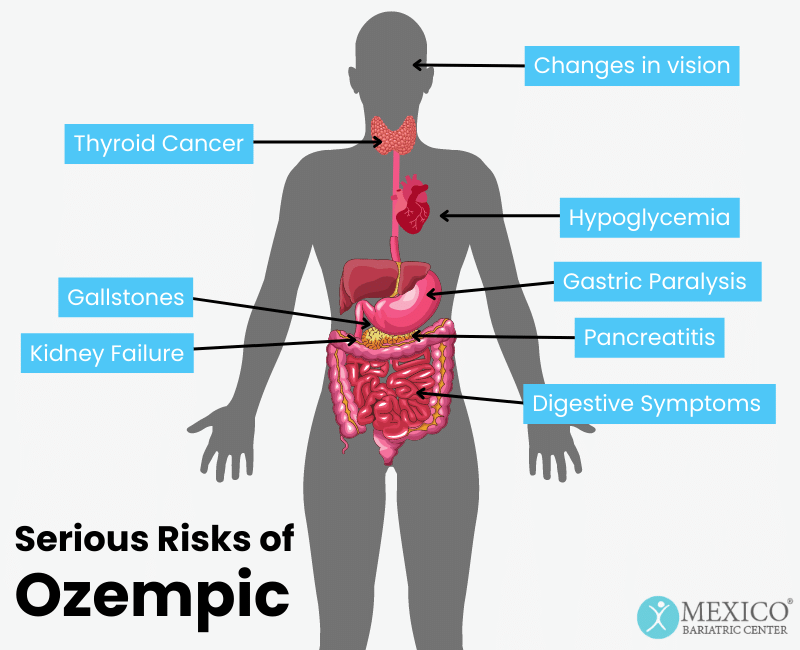
Despite its efficacy, some of Ozempic’s side effects can be severe, and these have been backed by clinical studies and scientific data. Here are some of the most serious risks associated with Ozempic use:
- Pancreatitis: One of the most alarming potential side effects of Ozempic is acute pancreatitis. Pancreatitis is an inflammation of the pancreas, which can cause symptoms such as severe abdominal pain, nausea, vomiting, and fever. A review published in the journal Diabetes Care found an increased risk of pancreatitis in patients using GLP-1 receptor agonists like Ozempic, although the absolute risk remains low. Nonetheless, people with a history of pancreatitis should use this medication with caution.
- Thyroid Cancer Risk: There has been concern about a potential link between GLP-1 receptor agonists and the development of thyroid cancer. Animal studies have shown that semaglutide, the active ingredient in Ozempic, can lead to the formation of thyroid tumours, including medullary thyroid carcinoma (MTC) . While these findings have not been conclusively observed in humans, the FDA has issued warnings about the potential risk. Individuals with a family history of thyroid cancer are advised to avoid Ozempic or discuss the risks with their healthcare provider.
- Gallbladder Disease: Research has also shown that Ozempic can increase the likelihood of gallbladder-related issues, such as gallstones and gallbladder inflammation (cholecystitis). In some cases, these conditions have required surgical intervention. A study published in JAMA found that individuals using GLP-1 receptor agonists had a higher incidence of gallbladder-related problems compared to those on placebo.
- Hypoglycemia: Although Ozempic is primarily prescribed to manage blood sugar levels, in some cases, it can lead to hypoglycemia, or dangerously low blood sugar levels, particularly when used in combination with other antidiabetic medications like insulin. Symptoms of hypoglycemia include dizziness, confusion, sweating, and in severe cases, seizures.
- Diabetic Retinopathy Complications: There is evidence suggesting that rapid improvements in blood sugar levels due to drugs like Ozempic may exacerbate diabetic retinopathy in patients with pre-existing diabetes. This complication can lead to worsening vision or even blindness in severe cases.
Given these risks, many individuals are seeking natural alternatives to Ozempic for weight management and metabolic health, especially those who are not diabetic but are using Ozempic off-label for weight loss.
The Rise of Natural Alternatives: Why They Matter

As concerns over the side effects of synthetic medications like Ozempic grow, there has been a surge in interest in natural alternatives that promote metabolic health in a safer and more holistic manner. These alternatives, typically derived from plants and natural compounds, offer a gentler approach to weight management by leveraging the body’s natural metabolic processes.
Benefits of Natural Alternatives
- Fewer Side Effects: Natural GLP-1 boosters typically come with fewer and less severe side effects compared to synthetic drugs. This makes them a safer option for those looking for long-term weight management solutions.
- Holistic Health: Unlike medications that target a single issue, natural alternatives often provide a broad range of benefits, from improved gut health to better overall well-being. They promote harmony between various bodily systems, helping to manage weight without disrupting other aspects of health.
- Sustainability: Many natural alternatives can be taken long-term without the need for medical supervision. This makes them suitable for individuals who are seeking a lifelong solution to maintaining a healthy weight.
- Affordability and Accessibility: Natural products are often more affordable than prescription medications and don’t require medical oversight, making them more accessible to a broader range of individuals.
Natural GLP-1 Boosters: Alternatives to Ozempic
Many everyday foods can enhance the body’s GLP-1 production, promoting satiety and stable blood sugar levels. Below is a list of key foods that have been scientifically shown to boost GLP-1, each with unique benefits:
1. High-Fiber Foods

Dietary fibre plays a significant role in increasing GLP-1 levels, as it slows down digestion, which promotes satiety and stimulates GLP-1 secretion.
- Whole Grains: Oats, barley, quinoa, brown rice, and whole wheat are rich in soluble fibre. Soluble fibre forms a gel-like substance in the gut that slows digestion, stimulates GLP-1 release, and helps regulate blood sugar levels.
- Legumes: Lentils, chickpeas, black beans, and kidney beans are excellent sources of fibre and protein. Their high fibre content promotes gut health, which in turn enhances GLP-1 secretion.
- Vegetables: Leafy greens like spinach, kale, and Brussels sprouts, along with broccoli, cauliflower, and carrots, are high in fibre. Their consumption helps promote a healthy gut environment that supports GLP-1 release.
2. Lean Proteins

Protein-rich meals have been shown to increase GLP-1 secretion by slowing down digestion and enhancing feelings of fullness.
- Chicken Breast & Turkey: These lean meats are high in protein and low in fat, which helps promote satiety and GLP-1 production without adding excess calories.
- Fish: Salmon, mackerel, and tuna are high in omega-3 fatty acids and lean protein, both of which support healthy digestion and GLP-1 secretion.
- Eggs: A great source of protein and healthy fats, eggs have been shown to stimulate GLP-1 release and help maintain stable blood sugar levels.
3. Fruits Rich in Polyphenols

Certain fruits are rich in polyphenols, which have been found to increase GLP-1 secretion and support healthy metabolism.
- Apples: Rich in fibre and polyphenols, apples help stimulate GLP-1 secretion and promote gut health.
- Berries: Blueberries, strawberries, and raspberries are loaded with antioxidants and polyphenols, which improve insulin sensitivity and stimulate GLP-1 release.
- Citrus Fruits: Oranges, grapefruits, and lemons contain flavonoids that enhance GLP-1 secretion and improve metabolic health.
4. Fermented Foods

Fermented foods promote the growth of beneficial gut bacteria, which play a role in GLP-1 secretion.
- Yogurt & Kefir: These probiotic-rich dairy products help maintain a healthy gut environment, which in turn supports the body’s natural GLP-1 production.
- Sauerkraut & Kimchi: Fermented vegetables that contain probiotics, which aid digestion and improve the gut microbiome, boosting GLP-1 levels.
5. Healthy Fats
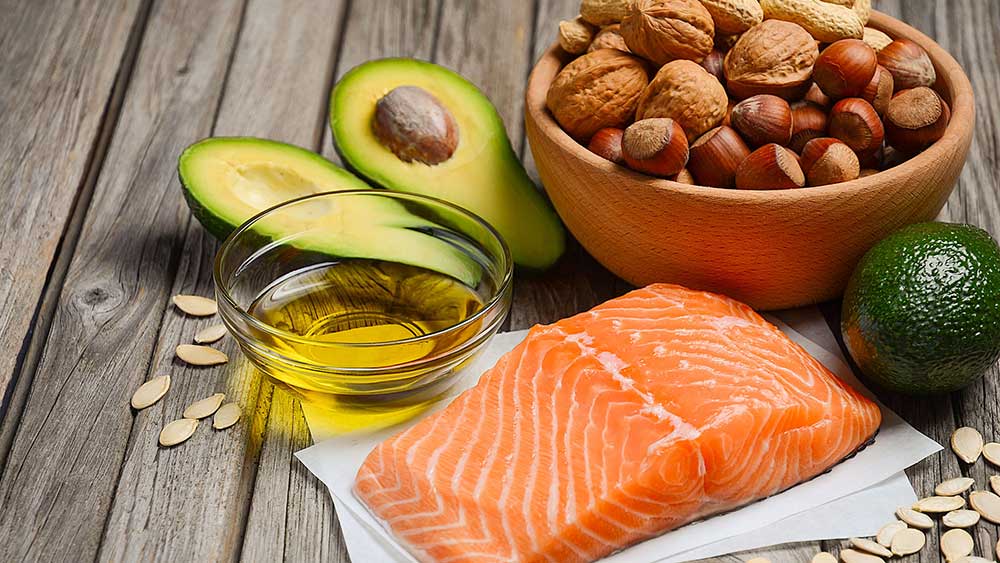
Monounsaturated and polyunsaturated fats, as well as omega-3 fatty acids, can enhance GLP-1 secretion by promoting satiety and reducing inflammation.
- Fatty Fish: Salmon, mackerel, sardines, and herring are rich in omega-3s and support healthy digestion and GLP-1 release.
- Avocados: High in fibre and healthy fats, avocados help regulate appetite and boost GLP-1 levels, which can aid in weight management.
- Olive Oil: Rich in monounsaturated fats, olive oil has been shown to stimulate GLP-1 secretion and improve overall metabolic health.
- Nuts & Seeds: Almonds, walnuts, chia seeds, and flaxseeds contain healthy fats and fibre that support satiety and GLP-1 secretion.
6. Herbs and Spices

Several herbs and spices have been shown to increase GLP-1 levels due to their anti-inflammatory and antioxidant properties.
- Turmeric: Curcumin, the active ingredient in turmeric, has been shown to boost GLP-1 levels and improve insulin sensitivity.
- Ginger: This powerful anti-inflammatory spice stimulates GLP-1 secretion and supports digestion.
- Cinnamon: Known for improving insulin sensitivity, cinnamon also enhances GLP-1 secretion, making it beneficial for blood sugar regulation.
7. Beans and Pulses

Beans and pulses are rich in both fibre and protein, making them excellent natural GLP-1 boosters.
- Black Beans: High in fibre and protein, black beans help increase satiety and promote the secretion of GLP-1.
- Chickpeas: A great source of fibre and plant-based protein, chickpeas help slow digestion and enhance GLP-1 levels.
8. Feijoa (Rich in Abscisic Acid)

This fruit, particularly in powder form, is rich in abscisic acid (ABA), which helps increase native GLP-1 secretion. Feijoa is a natural source of ABA, which supports GLP-1 secretion and promotes satiety, making it effective for metabolic support and weight management.
Feiolix®: A Natural GLP-1 Booster
One such natural alternative is Feiolix®, a product derived from the feijoa fruit, known for its high content of abscisic acid (ABA), a compound that naturally stimulates GLP-1 production in the body. Unlike Ozempic, which directly mimics GLP-1, Feiolix works by supporting the body’s innate ability to produce this important hormone.
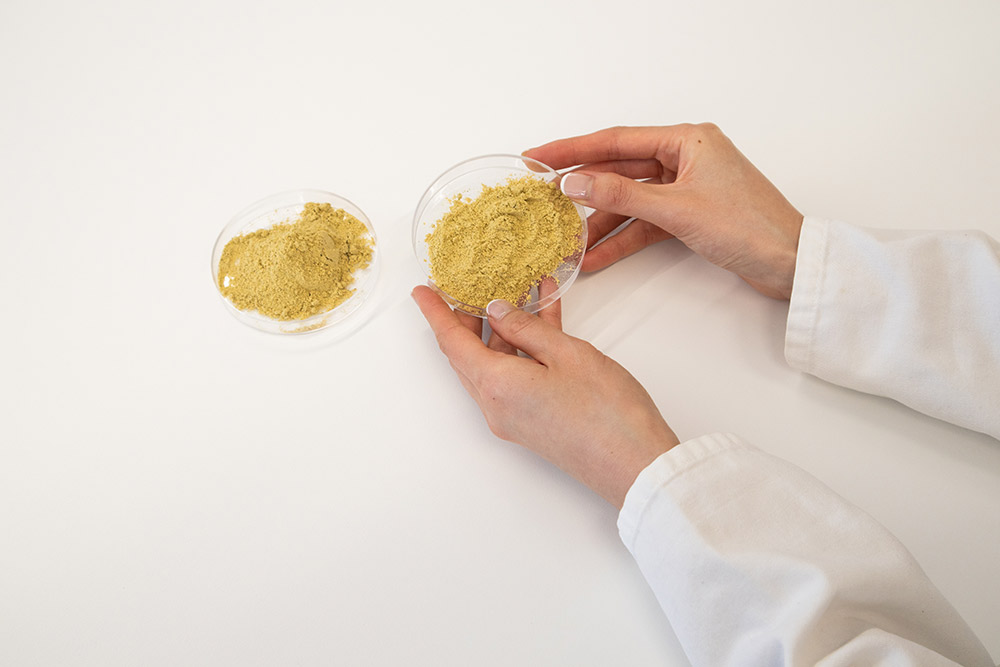
How Feiolix® Works
Feiolix stimulates the release of GLP-1 through its dual mechanism: the presence of abscisic acid (ABA) and the promotion of gut bacteria that enhance GLP-1 secretion. This approach mirrors the body’s natural metabolic processes, supporting weight loss and improved glucose regulation without the need for synthetic drugs.
Abscisic Acid:
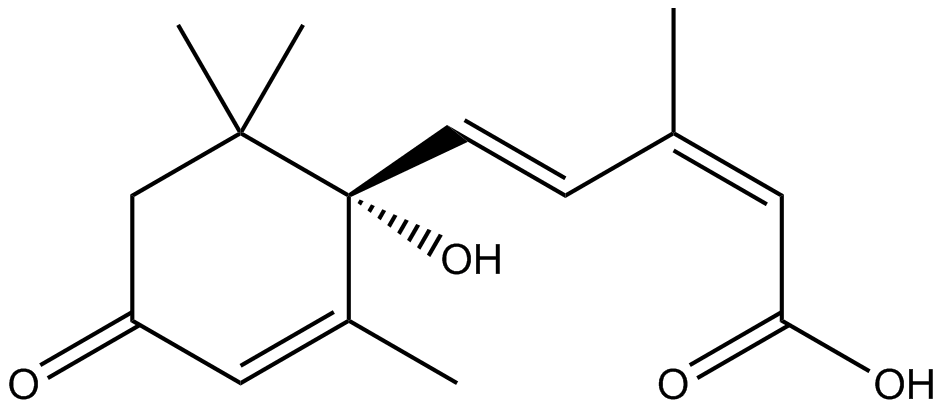
Abscisic acid (ABA) is a naturally occurring plant hormone that plays a crucial role in regulating various physiological processes in plants, such as seed dormancy, germination, and stress responses (especially during drought conditions). It helps plants adapt to environmental stresses by closing stomata (tiny openings on leaves) to reduce water loss and manage nutrient flow.
In recent research, abscisic acid has also been studied for its potential health benefits in humans. It has been found to influence glucose metabolism by stimulating the secretion of GLP-1 (glucagon-like peptide-1), a hormone that enhances insulin secretion, helps regulate blood sugar, and supports metabolic health. This makes it a key component in some natural metabolic boosters, including products like Feiolix, which is rich in ABA.
Benefits of Feiolix®
- Natural Composition: Feiolix is a natural, whole fruit powder standardized to contain more than 4 mg of abscisic acid (ABA) per 100 grams. This natural composition is ideal for individuals who prefer non-synthetic, plant-based supplements.
- Dual Mechanism of Action: Feiolix stimulates GLP-1 secretion through ABA and supports gut bacteria that naturally boost GLP-1 levels. This differs from Ozempic, which directly mimics GLP-1 and activates its receptors.
- Broader Metabolic Benefits: Feiolix offers more than just GLP-1 stimulation. It increases insulin secretion, enhances glucose absorption by skeletal muscle cells, and decreases inflammation, all of which contribute to improved metabolic health.
- Appetite Control and Thermogenesis: Feiolix helps reduce weight gain by increasing feelings of fullness and boosting thermogenesis, helping the body burn more calories post-meal.
- Gut Health Support: Feiolix contains dietary fibres that promote the growth of beneficial gut bacteria, contributing to better overall gut health. A healthy gut microbiome is closely linked to weight management and metabolic health.
- Long-Term Sustainability: As a dietary supplement, Feiolix can be used for extended periods without the need for medical supervision. Its natural composition makes it suitable for long-term metabolic support.
Comparing Ozempic and Feiolix®: A Side-by-Side Analysis
| Aspect | Feiolix | Ozempic |
| Composition | Natural whole fruit powder (feijoa) | Synthetic GLP-1 receptor agonist (semaglutide) |
| Administration | Daily powder or tablet form | Weekly injection |
| Mechanism | Stimulates native GLP-1 secretion | Mimics GLP-1 to increase insulin secretion |
| Side Effects | Minimal, gut health support | Gastrointestinal issues, nausea, vomiting |
| Cost | Affordable, no prescription required | Expensive, requires a prescription |
| Sustainability | Long-term use without medical supervision | Short-term, requires medical supervision |
| Gut Health | Supports gut microbiome | No direct gut health benefits |
Conclusion: Choosing the Right Path for Weight Management
Ozempic has proven to be an effective solution for managing weight and improving metabolic health, especially for individuals with type 2 diabetes. However, the severe side effects associated with its use cannot be ignored. For those looking for a safer, more natural approach to weight management, alternatives like Feiolix provide an effective solution that works in harmony with the body’s natural processes.
By supporting gut health, promoting natural GLP-1 production, and offering a sustainable approach to weight loss, natural alternatives like Feiolix are gaining traction among those seeking a long-term, holistic solution to their weight management goals.
References:
Müller TD, et al. Glucagon-like peptide 1 (GLP-1). Mol Metab. 2019;30:72-130. Nauck MA, Meier JJ. Incretin hormones: Their role in health and disease. Diabetes Obes Metab. 2018;20 Suppl 1:5-21.
Wilding JPH, et al. Once-Weekly Semaglutide in Adults with Overweight or Obesity. N Engl J Med. 2021;384(11):989-1002. FDA. FDA Approves New Drug Treatment for Chronic Weight Management, First Since 2014. 2021.
Frías JP, et al. Tirzepatide versus Semaglutide Once Weekly in Patients with Type 2 Diabetes. N Engl J Med. 2021;385(6):503-515. Bettge
K, et al. The GLP-1 Receptor Agonists Exenatide and Liraglutide Activate Glucose Transport by an AMPK-Dependent Mechanism. J Mol Med (Berl). 2012;90(11):1327-1336. Wegovy Prescribing Information. Novo Nordisk. 2021.
FDA. FDA 101: Dietary Supplements. 2022.


